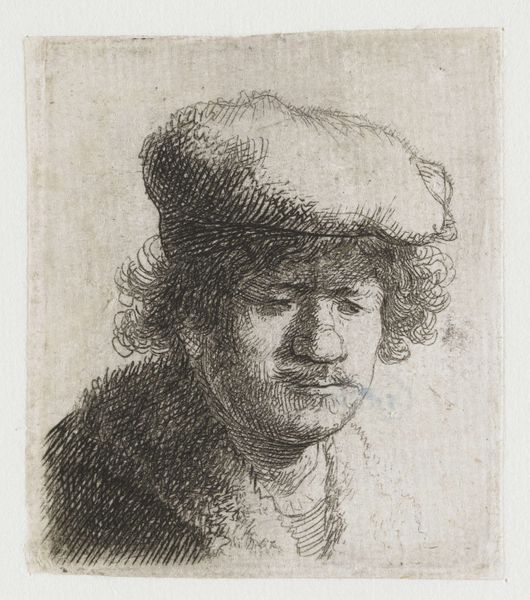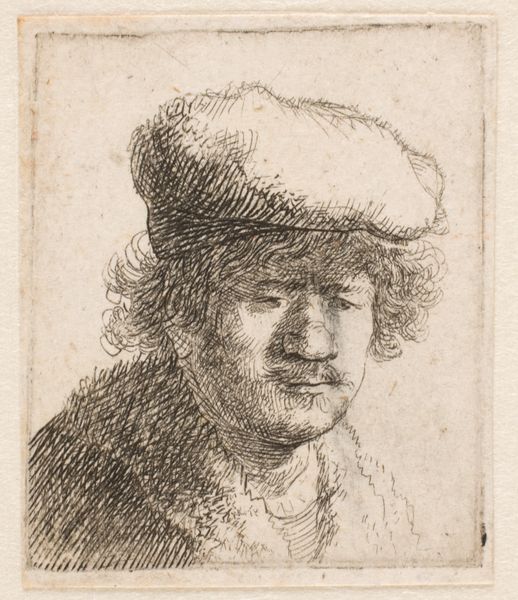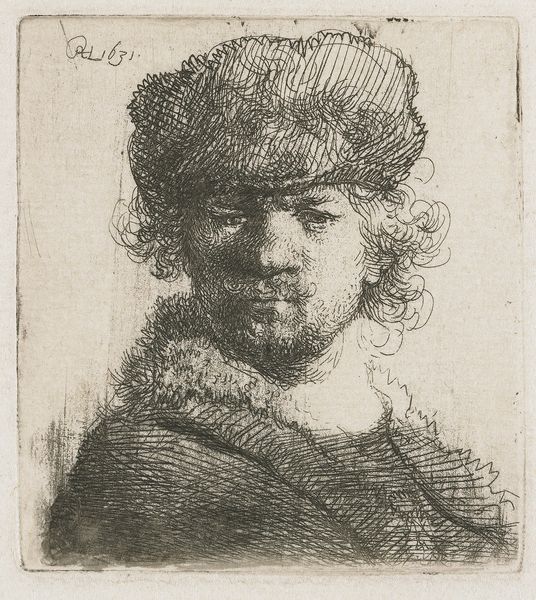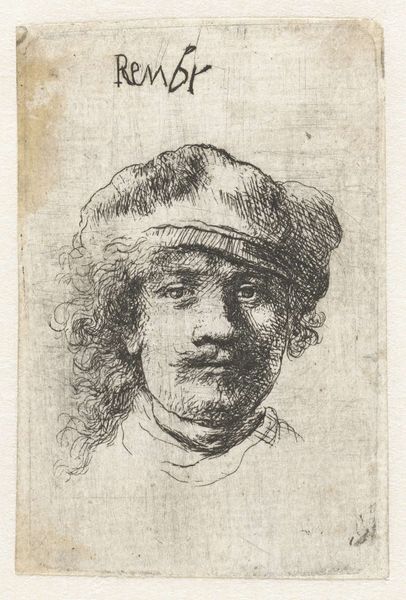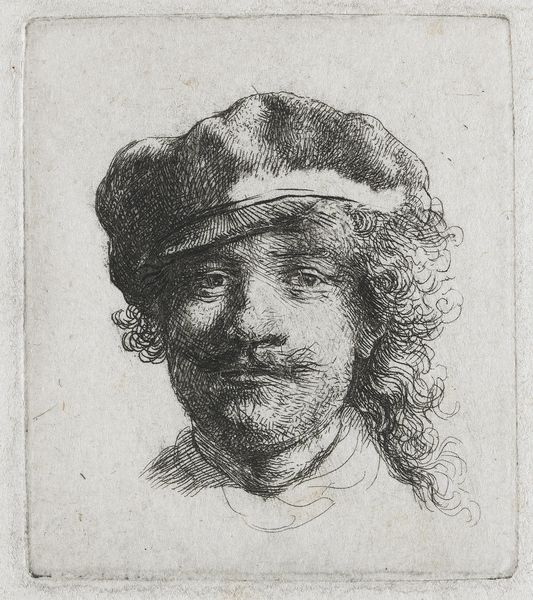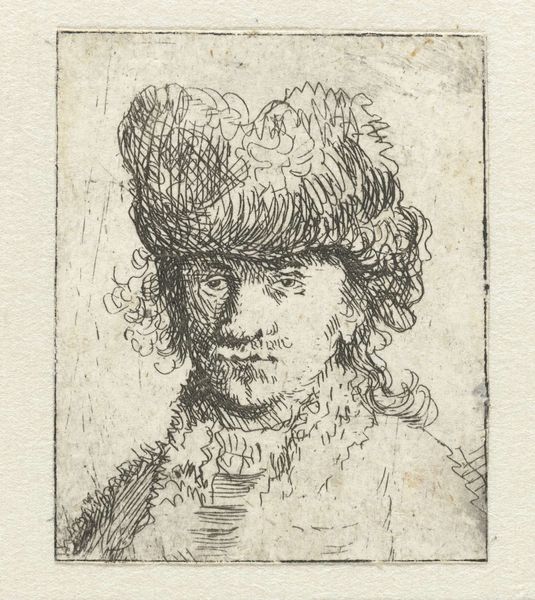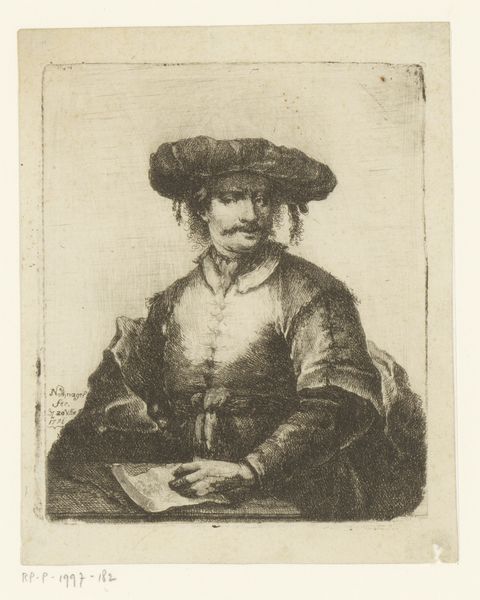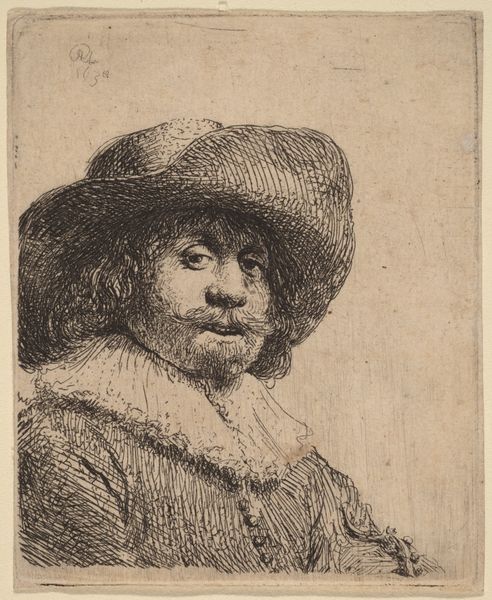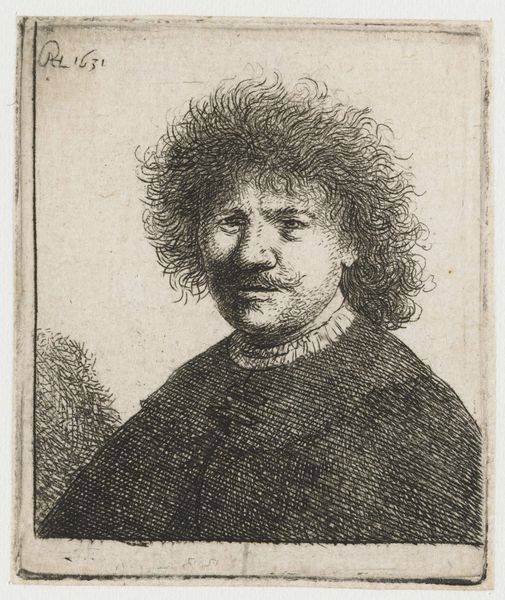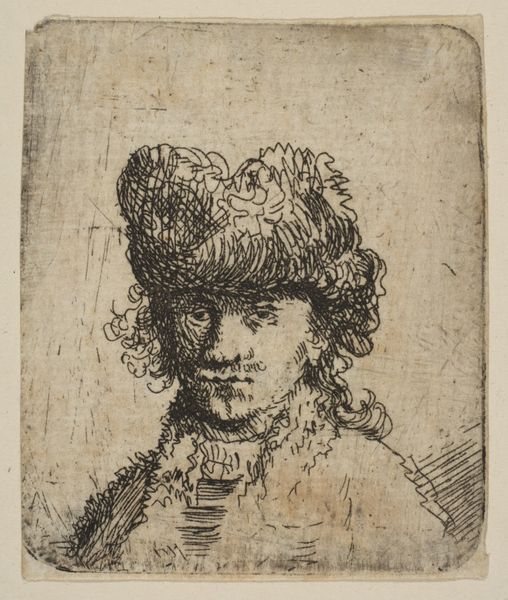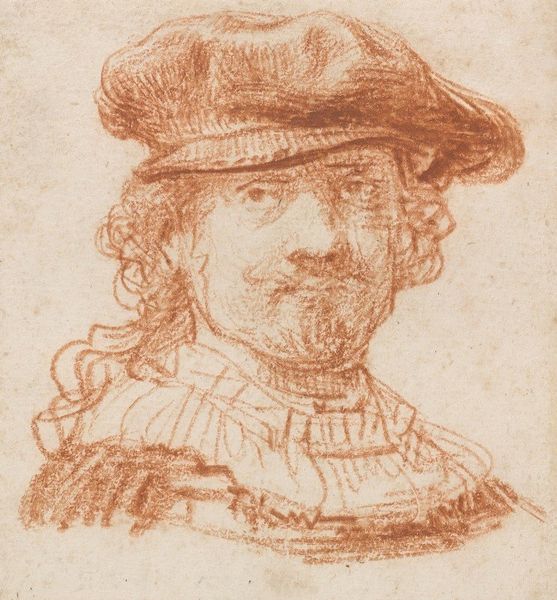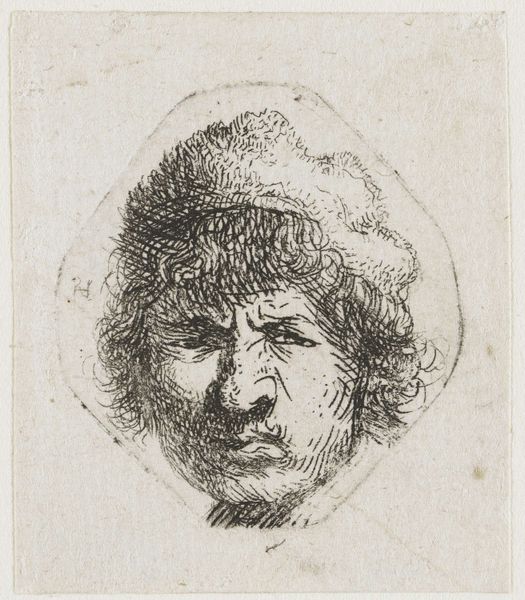
etching, intaglio
#
portrait
#
self-portrait
#
baroque
#
dutch-golden-age
#
etching
#
intaglio
#
figuration
Dimensions: height 50 mm, width 42 mm
Copyright: Rijks Museum: Open Domain
Editor: So, this is Rembrandt van Rijn's "Self-portrait with cap pulled forward," dating back to about 1630. It’s an etching. There's this wonderful, almost blurry quality to it; a real softness achieved with such stark lines. What do you make of it? Curator: You know, there's something deeply intimate about Rembrandt's self-portraits, isn’t there? Almost like catching him off guard. This isn't a grand, posed depiction. It's more… introspective, don't you think? He's almost hiding, pulling that cap forward, a master of light and shadow even then, at a younger age than we typically associate with that kind of gravitas. Do you feel any of that mood coming across, even in the lines he chooses? Editor: Definitely. It feels much more personal than some of his later, grander works. The way he’s partially obscured – makes me feel I am catching a private moment. Why do you think he did so many self-portraits? Curator: Ah, that's the million-dollar question, isn't it? I think, at the surface, he was using his own face as a study of expression. But maybe, and I do believe so, more fundamentally, he was searching for himself in art. And it also provided a steady model when commissions may have been wanting, earlier in his career, which is easy to overlook given his incredible commercial appeal in the era! Maybe this pulling-forward-of-the-hat, and the lines he is creating is hiding away both a visual study and also his deepest, perhaps unspoken creative longings! Don’t you just love how, even after centuries, the artist can still be reaching out, touching us with those probing observations. Editor: That's beautifully put, I hadn't thought about it that way, almost using art to find yourself through finding your subject, makes sense given the scope of Rembrandt's works. Curator: It is the self reflected, and therefore the other. It is him. It is me. It is us. So what are you going to pull forward today, perhaps from art history itself, to continue on in your own journey?
Comments
No comments
Be the first to comment and join the conversation on the ultimate creative platform.
